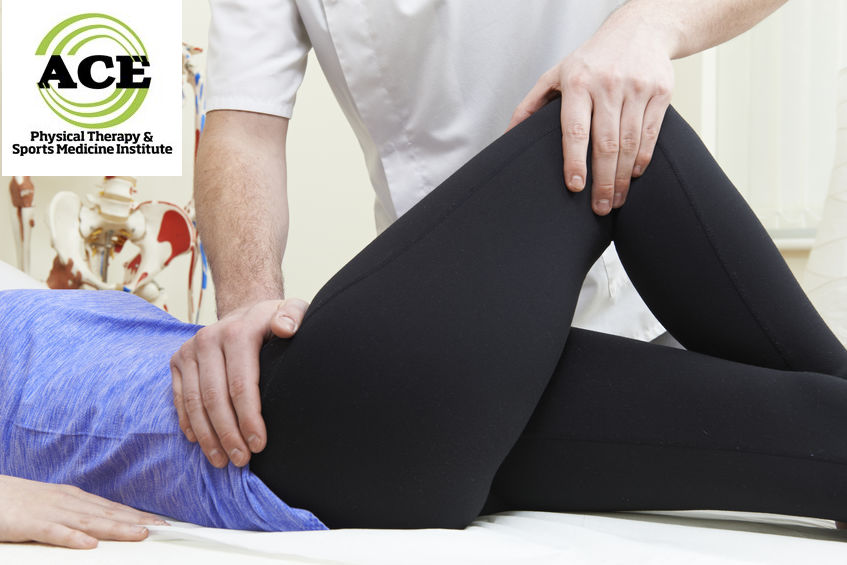SNAPPING HIP SYNDROME

Tid Bits of Info
- Snapping hip syndrome is also known as coxa sultans.
- 10% of the population is diagnosed with snapping hip syndrome every year.
- The cause of snapping hip syndrome can originate from outside or inside the joint.
- Snapping hip syndrome is usually not painful.
- Seek the advice and treatment from a Physical Therapist if you suspect that you have snapping hip syndrome.
As its name indicates, snapping hip syndrome indicates that the hip snaps whenever it is moved whether walking, standing, or simply raising the leg. Every year, about 10% of the population will begin to experience this symptom and received the snapping hip syndrome diagnosis. Most of the time, this is primarily irritating and can be treated through physical therapy. On the other hand, it can cause serious pain and even could require surgery based on the source of the problem.
Sports that require active hip movements are particularly vulnerable especially dancers. Football, weight lifting, and running can also cause snapping hip syndrome. When a patient complains of the symptoms, the healthcare professional assesses the source of the condition to determine if the snapping symptom is inside or outside the joint. On those rare times when it is inside the hip, an MRI is performed to determine if this occurs from damage to the articular or fibrocartilage.
Unfortunately, conservative, non-invasive treatment for this condition is usually not very successful. It is possible that the patient will benefit from a steroid injection, but surgery is often needed to resolve the problem.
More commonly, snapping hip syndrome is coming from outside the joint or extra-articular. Sometimes the symptoms come from the lateral side and usually occur when the Ilio-tibial band (ITB), rubs excessively over the greater trochanter (large bony protrusion near your pants pocket). The ITB has two muscles that insert into it and either of these muscles can cause the ITB to become too taut if the muscle itself is too tight. The muscle tissue can “shorten” and lead to excessive pulling on the ITB which in turn makes it too taut over the bony protrusion. Medial side snapping usually occurs when the hip flexor muscles, iliacus and psoas major (join together to form the iliopsoas with a common tendon) come into abnormal contact with bony prominences in the area of the hip joint. The iliacus muscle tendon can get “hooked” by the lesser trochanter as the hip is moved from a flexed to an extended position.
Snapping hip syndrome can be painful, but most times the symptoms are more annoying than painful. The lateral side snapping often times looks like the hip is “dislocating”. The person experiencing these symptoms can often times reproduce the symptom upon command. If they continue to have this occur, many times the bursa (fluid filled sac that protects the tendon from rubbing against a bond) will become inflamed and cause significant pain.
Treatment of extra-articular snapping sensations focuses on re-establishing normal motion and strength in the involved hip. Reduced flexibility of certain muscles or other soft tissues can lead to abnormal hip mechanics. This can lead to the abnormal contact of the involved tendon with a particular bony prominence.

Physical Therapists can evaluate the condition and develop a sound, well-rounded exercise routine to address the deficiencies that have caused the problems. They will include stretching and strengthening because any muscle that is too tight or too taut will be weak. There is a strong need for good core strength. The Therapist can perform manual techniques that are designed to enhance motion by stretching the structures that are too tight.
Visiting a Physical Therapist does not require a doctor’s prescription but your insurance policy might require that you get a referral from your general practitioner. If you have a snapping sensation in your hip seek the advice and treatment from a Physical Therapist.
Snapping hip syndrome has many causes and most are not “serious” and usually can be treated conservatively and have a successful outcome. If the cause originates from inside the joint, more aggressive treatment including injections and//or surgery might be needed to resolve the symptoms. When the problem arises from outside the joint, conservative treatment that includes stretching and strengthening exercises are the treatment options most commonly applied to the condition.
























